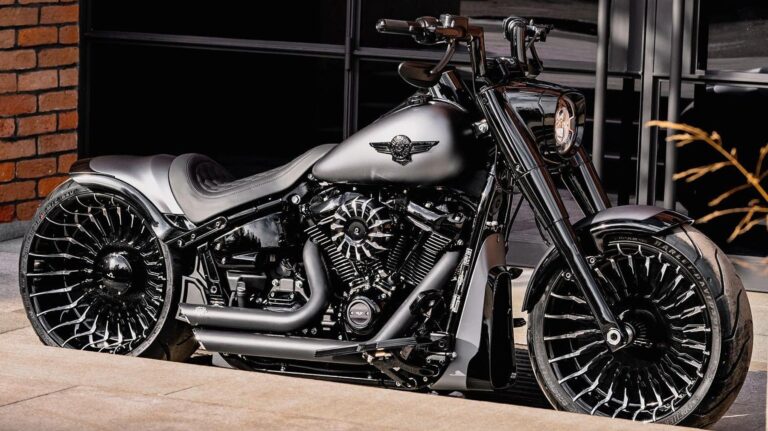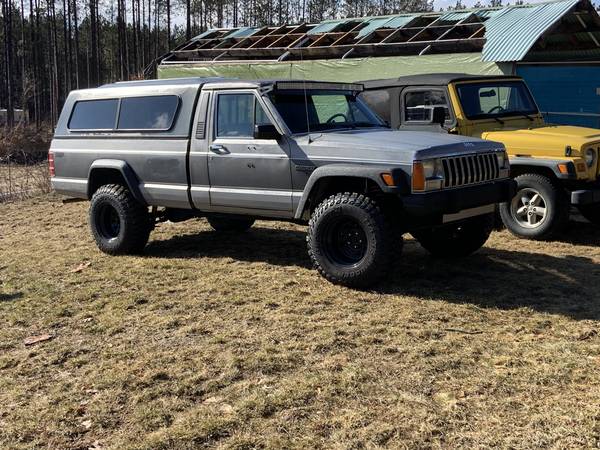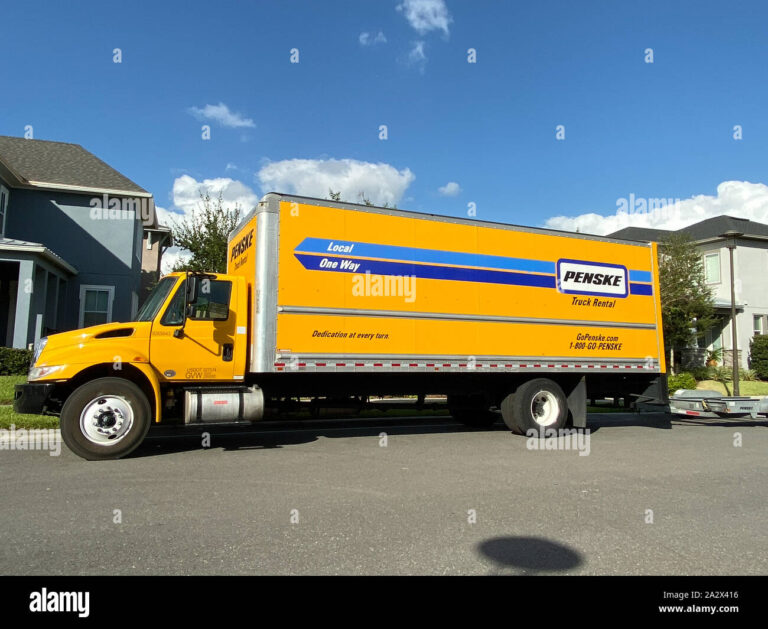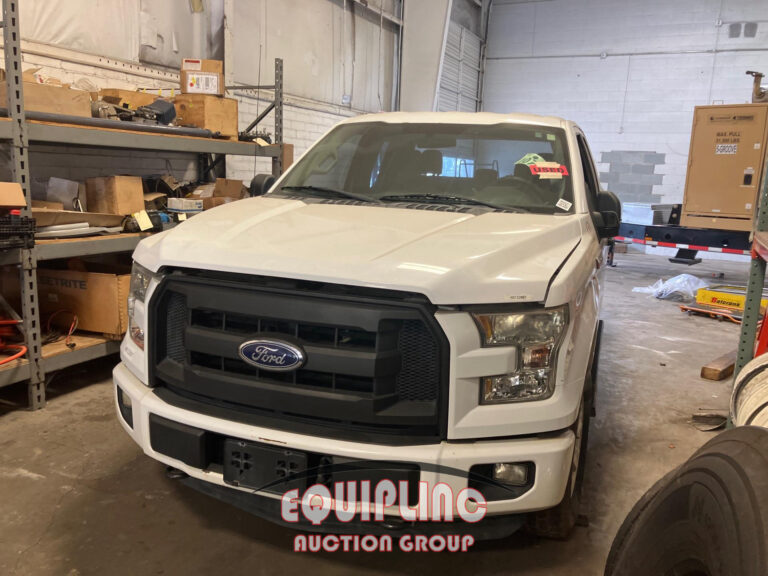Truck Cap Compatibility Chart: Your Essential Guide to a Perfect Fit
Truck Cap Compatibility Chart: Your Essential Guide to a Perfect Fit cars.truckstrend.com
For truck owners, the addition of a truck cap – often called a topper, camper shell, or bed cap – transforms an open bed into a secure, weather-protected, and versatile storage or living space. Whether you’re a contractor needing to secure tools, an outdoor enthusiast hauling gear, or someone looking to expand their truck’s utility, a truck cap is an invaluable investment. However, the path to a perfectly fitting cap is paved with precise measurements and specific vehicle details. This is where the Truck Cap Compatibility Chart becomes not just a helpful tool, but an absolute necessity.
A Truck Cap Compatibility Chart is a detailed reference guide, typically provided by cap manufacturers or reputable dealers, that lists which specific truck cap models are designed to fit various truck makes, models, years, and bed lengths. It’s the definitive answer key to the critical question: "Will this cap fit my truck?" Ignoring this chart, or making assumptions, is a common pitfall that can lead to costly mistakes, compromised functionality, and significant frustration. This comprehensive guide will delve into the intricacies of these charts, helping you navigate the world of truck caps with confidence and precision.
Truck Cap Compatibility Chart: Your Essential Guide to a Perfect Fit
Understanding the Basics: What Makes a Truck Cap Fit?
Before diving into the chart itself, it’s crucial to grasp the fundamental dimensions and design elements that dictate a truck cap’s fit. Even a seemingly minor difference can render a cap incompatible.
-
Truck Bed Dimensions: This is the most critical factor.
- Length: Measured from the bulkhead (front of the bed, near the cab) to the inside of the closed tailgate. Truck bed lengths are typically standardized (e.g., 5.5 ft, 6.5 ft, 8 ft), but slight variations exist between manufacturers and models.
- Width: Measured across the bed rails. The width can vary at the bulkhead versus the tailgate, and the cap must accommodate these subtle tapers.
- Bed Rail Height and Design: The height of the bed rails from the truck bed floor is important, but more crucially, the design of the top edge of the rails. Some trucks have integrated plastic rail caps, others are bare metal, and some have unique rail systems (e.g., Toyota’s deck rail system, RamBox). The truck cap’s base frame must sit flush and seal properly on these rails.
- Tailgate Curvature: The top edge of the tailgate often has a specific curve or shape that the rear of the truck cap must match precisely for a weather-tight seal and aesthetic continuity.
.jpg/580px-Freightliner_M2_106_6x4_2014_(14240376744).jpg)
-
Cab Height and Style: While the cap sits on the bed, its front profile needs to align with the truck’s cab for proper aesthetics and aerodynamics. Whether you have a Regular Cab, Extended Cab (King Cab, SuperCab, Double Cab, Quad Cab), or Crew Cab (SuperCrew, CrewMax), the cab height and angle can influence the cap’s design.
-
Year, Make, and Model Specificity: This is where many people go wrong. A Ford F-150 from 2010 might have a completely different bed shape and dimensions than an F-150 from 2020, even if both are "F-150s." Truck manufacturers frequently undergo "body style changes" where the entire vehicle, including the bed, is redesigned. A compatibility chart explicitly accounts for these year ranges.

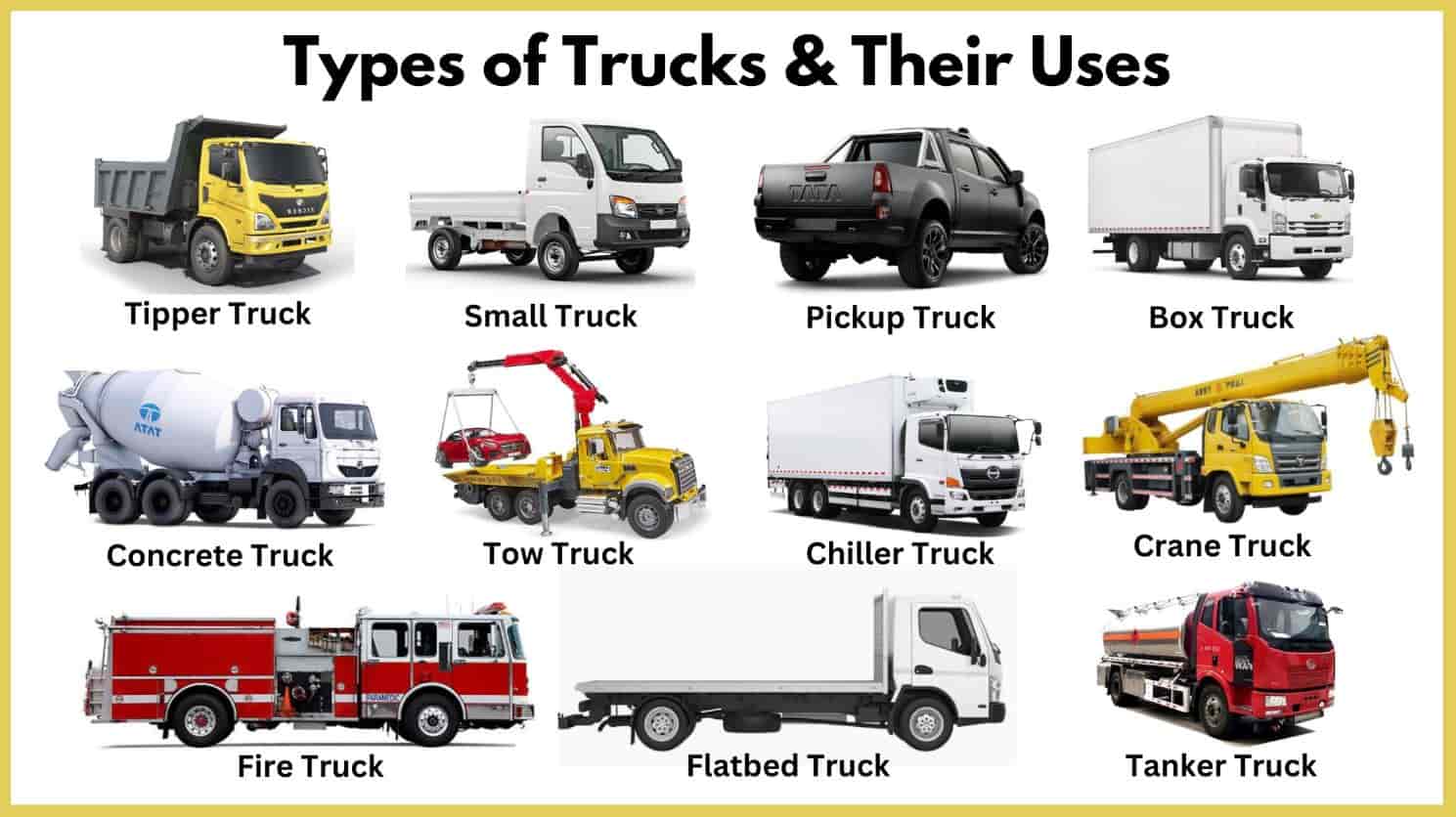
The Anatomy of a Truck Cap Compatibility Chart
A well-structured Truck Cap Compatibility Chart organizes information in a clear, systematic way, allowing you to quickly identify suitable options. Here are the key data points you’ll find:
- Cap Manufacturer: The brand of the truck cap (e.g., Leer, ARE, Snugtop, Raider, ATC, Ranch).
- Cap Model/Series: The specific design or series of the truck cap (e.g., Leer 100R, ARE CX Classic, Snugtop Rebel). Each model has distinct features, window configurations, and roof lines.
- Truck Make: The vehicle manufacturer (e.g., Ford, Chevrolet, Ram, Toyota, Nissan, GMC, Honda).
- Truck Model: The specific truck model (e.g., F-150, Silverado 1500, Ram 1500, Tacoma, Tundra, Frontier, Colorado, Canyon, Ridgeline).
- Truck Year Range: The crucial span of years for which that specific cap model is designed to fit that truck model (e.g., 2015-2020, 2019-Present New Body Style, 2005-2015).
- Bed Length (in feet or inches): This specifies the exact bed length the cap is designed for (e.g., 5.5 ft, 6.5 ft, 8 ft).
- Notes/Special Considerations: This section provides vital nuances. It might indicate:
- Specific cab styles (e.g., "Fits SuperCrew/SuperCab only").
- Exclusions (e.g., "Does not fit RamBox," "Excludes Trail Boss with Multimatic shocks").
- Requirements (e.g., "Requires specific clamp kit," "May require removal of factory bedliner lip").
- Distinctions between "Classic" and "New Body Style" for certain truck models.
Benefits of Using a Compatibility Chart
The advantages of diligently consulting a Truck Cap Compatibility Chart are numerous and significant:
- Prevents Costly Mistakes: The most obvious benefit. Buying the wrong cap can lead to expensive shipping fees, restocking charges, or even being stuck with an unusable product.
- Ensures Optimal Fit and Functionality: A properly matched cap will sit flush, seal tightly against weather, and operate smoothly (e.g., tailgate closing without interference).
- Enhances Safety: A secure, well-fitting cap prevents cargo from shifting or falling out and ensures the cap itself is safely affixed to your truck, especially at highway speeds.
- Maintains Aesthetics: A cap that looks like it was custom-made for your truck enhances its overall appearance and maintains its resale value. A misaligned or ill-fitting cap looks out of place and detracts from the truck’s appeal.
- Simplifies the Shopping Process: Instead of guessing or relying on vague descriptions, the chart quickly narrows down your options to only those that are guaranteed to fit your specific vehicle.
- Preserves Resale Value: A cap that fits perfectly and is in good condition can be a strong selling point if you decide to sell your truck.
How to Effectively Use a Truck Cap Compatibility Chart
Using the chart effectively requires a bit of homework on your part:
-
Identify Your Truck’s Specifics with Precision:
- Year: Check your truck’s registration, title, or VIN (Vehicle Identification Number) for the exact model year.
- Make and Model: This is usually straightforward (e.g., Toyota Tacoma).
- Cab Style: Is it a Regular Cab, Extended Cab, or Crew Cab?
- Bed Length: Crucially, measure your truck bed yourself. While standard lengths exist, variations can occur, especially with aftermarket liners or specific trim levels. Measure from the inside of the bulkhead to the inside of the closed tailgate. Don’t rely solely on manufacturer specs, as they sometimes round or refer to exterior dimensions.
- Bed Rail Details: Note any unique features of your bed rails or tailgate. Snap a few photos if you’re shopping online or sending information to a dealer.
-
Consult Official Manufacturer Charts: Always start with the cap manufacturer’s official compatibility chart, usually found on their website. These are the most accurate.
-
Cross-Reference with Dealer/Retailer Information: If purchasing from a dealer or online retailer, ensure their information matches the manufacturer’s chart. A reputable dealer will also verify your truck’s details.
-
Be Extra Cautious with Used Caps: If you’re buying a used cap, the compatibility chart is still your first line of defense. However, you must also physically measure the used cap and compare it meticulously to your truck bed’s dimensions. Don’t assume a "Ford F-150 cap" will fit your F-150 without checking the year range and bed length.
-
Don’t Guess: If there’s any doubt, contact the cap manufacturer or a certified dealer. Provide them with all your truck’s details (Year, Make, Model, Cab Style, Bed Length, and any relevant VIN digits if requested).
Challenges and Solutions
While invaluable, using compatibility charts can present a few challenges:
- Challenge: Body Style Changes: Truck manufacturers often introduce "new body styles" mid-year or with significant redesigns. This means a 2019 Silverado might have a completely different bed than a 2018 Silverado.
- Solution: Pay extremely close attention to the "Year Range" and "Notes" sections on the chart. They will often specify "Classic Body Style" vs. "New Body Style."
- Challenge: Aftermarket Bed Liners/Accessories: Some drop-in bed liners have lips that extend over the bed rails, or under-rail systems that might interfere with cap clamps.
- Solution: Inform the cap dealer about any aftermarket accessories. They can advise if removal or modification is necessary, or if specific clamp types are required.
- Challenge: "Universal" Caps: While rare, some companies claim to offer "universal" truck caps. These are typically compromises, often with less-than-perfect sealing and aesthetics.
- Solution: Avoid "universal" caps if a precise, weather-tight fit is important to you. Invest in a cap specifically designed for your truck.
- Challenge: Discontinued Models/Older Trucks: Finding detailed charts for very old truck models or discontinued cap lines can be difficult.
- Solution: Search truck forums, contact specialized used truck cap dealers, or resort to meticulous physical measurements of both your truck and the potential used cap.
- Challenge: Lack of Detailed Information: Some online charts might be sparse or poorly organized.
- Solution: If the chart on a retailer’s website is unclear, go directly to the cap manufacturer’s official website. If still in doubt, call their customer service line.
Practical Advice and Actionable Insights
- Measure Thrice, Buy Once: Seriously, measure your truck bed’s length, width (at multiple points), and bed rail height yourself. Do not rely solely on internet specifications.
- Visual Confirmation: Take clear photos of your truck bed, especially the bed rails, tailgate, and any unique features, to share with dealers or manufacturers if needed.
- Consider Professional Installation: Even with the right cap, proper installation is key for a secure, weather-tight seal. Many dealers offer installation services, which can save you headaches and potential damage.
- Don’t Ignore Notes: The "Notes/Special Considerations" section of a compatibility chart often holds crucial details that can make or break a fit. Read it carefully.
Conceptual Truck Cap Compatibility Chart (Illustrative Example)
Below is an example of what a section of a Truck Cap Compatibility Chart might look like. It illustrates the types of information included, not actual pricing for the caps, as pricing varies widely based on features, materials, and region. The "price" of using this chart lies in preventing costly errors.
| Cap Manufacturer | Cap Model | Truck Make | Truck Model | Truck Year Range | Bed Length (ft) | Notes/Fit Details |
|---|---|---|---|---|---|---|
| Leer | 100R | Ford | F-150 | 2015-2020 | 5.5 | Fits SuperCrew/SuperCab. Requires specific clamp kit (P/N 12345). |
| Leer | 100R | Ford | F-150 | 2015-2020 | 6.5 | Fits SuperCab/Regular Cab. Standard fit. |
| ARE | CX Classic | Chevrolet | Silverado 1500 | 2019-Present (New Body) | 5.8 | Excludes Trail Boss models equipped with Multimatic shocks. |
| ARE | CX Classic | Chevrolet | Silverado 1500 | 2019-Present (New Body) | 6.6 | Standard fit for Crew Cab/Double Cab. |
| Snugtop | Rebel | Toyota | Tacoma | 2005-2015 | 5.0 | Fits Access Cab/Double Cab models. |
| Snugtop | Rebel | Toyota | Tacoma | 2005-2015 | 6.0 | Fits Regular Cab/Access Cab models. |
| Raider | Vagabond Elite | Ram | 1500 | 2009-2018 (Classic) | 5.7 | Fits Quad Cab/Crew Cab. |
| Raider | Vagabond Elite | Ram | 1500 | 2019-Present (New Body) | 5.7 | Does NOT fit RamBox cargo management system. Verify bed rail type. |
Note: This table is illustrative. Actual compatibility charts are extensive and may include specific part numbers, detailed diagrams, and more nuanced fitment notes. Pricing for truck caps is determined by the specific model, features, materials, and dealer, and is separate from the compatibility information.
Frequently Asked Questions (FAQ)
Q: Can I use a truck cap from a different make of truck on my vehicle?
A: Generally, no. Truck beds vary significantly in dimensions, rail design, and tailgate shape between different manufacturers (e.g., a Ford cap won’t fit a Chevy). Even within the same manufacturer, different models or year ranges often require specific caps.
Q: My truck has an aftermarket spray-in or drop-in bed liner. Will it affect compatibility?
A: Spray-in liners typically do not affect compatibility as they conform to the bed’s shape. However, some drop-in bed liners have lips that extend over the bed rails, which can interfere with the cap’s base frame or clamping system. Always inform your dealer if you have a drop-in liner, as it might require trimming or specific clamps.
Q: What if my truck’s year falls between body style changes (e.g., my 2018 truck is the "new body style" that started in late 2017)?
A: This is a common situation. The compatibility chart will often specify "Early 2018," "Late 2018," "Classic Body Style," or "New Body Style" with clear year ranges. It’s crucial to know which body style your truck has. Visually comparing your truck to images of both body styles for that year can help, or consult your VIN with a dealership.
Q: Are "universal" truck caps truly universal?
A: "Universal" truck caps are rare and typically a compromise. They may offer a loose fit with significant gaps, making them less weather-tight and secure. For a proper, aesthetically pleasing, and functional fit, it’s always best to choose a cap specifically designed for your truck’s make, model, year, and bed length.
Q: Where can I find official truck cap compatibility charts?
A: The best place to find official charts is on the websites of major truck cap manufacturers (e.g., Leer.com, AREAccessories.com, Snugtop.com). Reputable truck accessory dealers also often have these charts readily available.
Q: Does cab height matter when choosing a truck cap?
A: While the cap sits on the bed, its front profile is designed to align with the cab’s height and contour for optimal aesthetics and aerodynamics. Most compatibility charts implicitly account for this, as cap models are typically designed for specific truck models that have consistent cab heights within their year range. However, if you have a custom lift or unique cab modification, you should discuss this with the cap manufacturer or dealer.
Conclusion
The Truck Cap Compatibility Chart is far more than just a list of numbers; it’s the guardian of your investment, ensuring that the truck cap you choose integrates seamlessly with your vehicle. By understanding the critical dimensions that dictate fit, diligently consulting these charts, and taking the time to verify your truck’s exact specifications, you can avoid costly errors and enjoy all the benefits a perfectly fitted truck cap has to offer. In the world of truck accessories, precision is paramount, and the compatibility chart is your most reliable guide to achieving that perfect fit.
